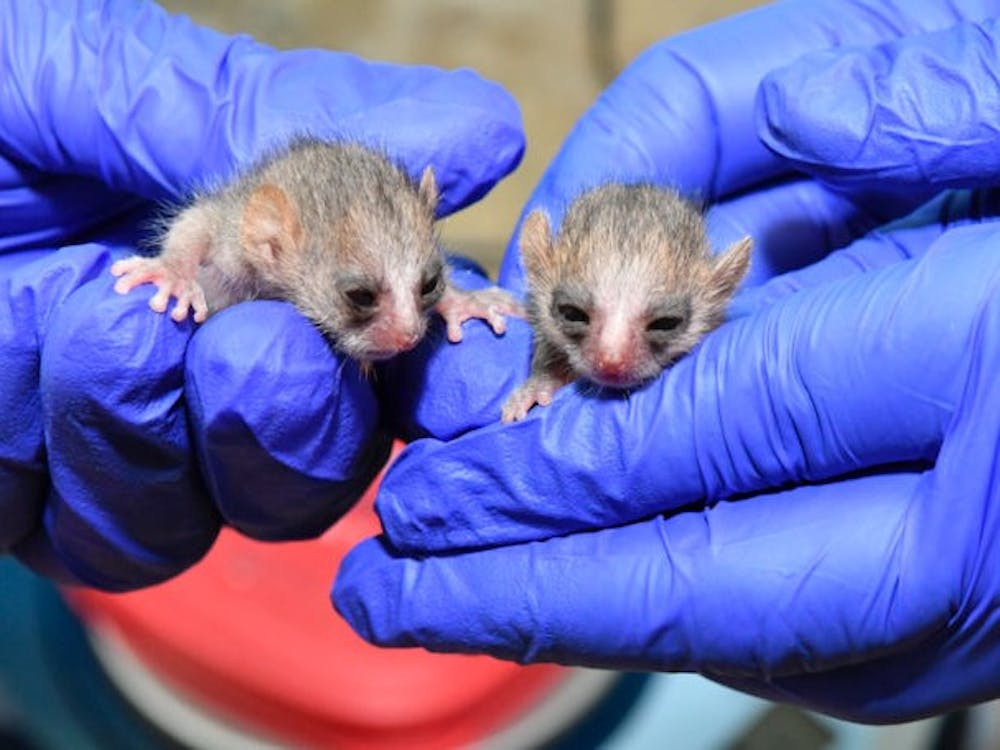What does sriracha have in common with a magnolia tree? As of July, both are the namesake of grey mouse lemurs at the Duke Lemur Center.
Cedar and Magnolia, grey mouse lemur twins at the DLC, were born to parents Sriracha and Prickly Pear July 30, according to a news release. Weighed two days after their birth, they stood at 7.6 grams each, which the DLC noted is roughly the weight of three U.S. pennies.
"They’re both healthy and vital little lemurs, and mom Sriracha seems very relaxed with them exploring," wrote Sara Clark, director of communications for the DLC, in an email. "They have a variety of nesting materials available to them, so when it’s time to sleep, they have a very comfy nestbox to all go into together."
The DLC has a tradition of naming mouse lemurs after “plants, including herbs, spices, trees, vegetables and flowers,” according to the press release, and Cedar and Magnolia follow that practice. They join fellow DLC mouse lemurs Juneberry and Wandering Willie and their triplets born last year—Teazel, Pumpernickel and Bee Balm.
After their first annual physical exam, the triplets were found to all be in "good health," Clark wrote. She explained that because they have now reached sexual maturity, Pumpernickel lives in a different enclosure than his sisters Teazel and Bee Balm. The sisters still live with their mother, Clark wrote, and Bee Balm has a habit of "chasing her sister around their enclosure, nipping at Teazel’s tail."
The DLC has also welcomed lemurs of other species this year. Marie, a Coquerel’s sifaka, was born in April.
In August, three members of the world’s only hibernating primate species were born at the DLC.
The fat-tailed dwarf lemur triplets were named after birds—Elephant Bird, Albatross and Bustard. Researchers have studied their species in an effort to learn how to combat aging in humans or even induce hibernation in astronauts.
Recently, Cedar and Magnolia were seen “bouncing around their enclosure and vocalizing” as they came outside their nest box for the first time, according to the release. The DLC also posted a video of the twins playing in their “birthing suite” and eating food with Sriracha.
Editor's Note: This article was updated Tuesday afternoon to include Clark's comment.
Get The Chronicle straight to your inbox
Sign up for our weekly newsletter. Cancel at any time.

